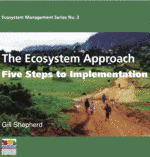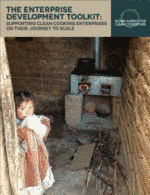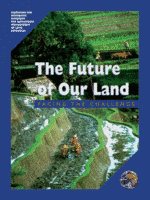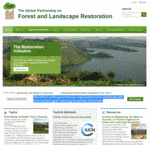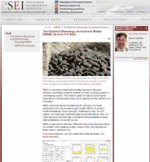الأدوات
الأداة هي مصدر يوظف لدعم تنفيذ الإدارة المستدامة للغابات وتوجيهها. ويشتمل هذا القسم على جميع الأدوات المتاحة في مجموعة أدوات لإدارة المستدامة للغابات التي قد تكون على شكل إصدارات أو مقاطع فيديو حول التعلم الإلكتروني أو برمجيات وما إلى ذلك.
بوسعكم تصفح "الأدوات" من خلال كتابة كلمات أساسية في مربع البحث المجاني أو بإمكانكم تضييق نطاق البحث باستخدام فلاتر موجودة على الجانب الأيمن من الصفحة.
The Ecosystem Approach is a strategy for the integrated management of land, water and living resources that promotes conservation and sustainable use in an equitable way. It is the primary framework for action under the Convention on Biological Diversity (CBD) and comprises 12 Principles. In considering how to best implement...
The enterprise development toolkit - Supporting clean cooking enterprises on their journey to scale
2014
2014
Increasing investment in the clean cooking sector is critical to realizing the Alliance’s goal of 100 million households adopting cleaner and more efficient stoves and fuels by 2020. In the sector report Igniting Change: A Strategy for Universal Adoption of Clean Cookstoves and Fuels, stakeholders cited access to finance as...
A profusely illustrated manual for woodlot owners and small-scale woods contractors. It outlines the modifications and auxiliary equipment that may be needed if a farm tractor is to be useful in forestry operations. Guidelines for planning operations and for safe working techniques are also provided. The last sections of the...
FAO, UNEP and other national and international institutions, have developed an improved framework for land resources development and management that addresses the evolving nature of integrated land management. This document is the third in the series and proposes an integrated planning approach for sustainable management of land resources based on...
The Global Partnership on Forest and Landscape Restoration is a proactive network that unites governments, organisations, communities and individuals with a common goal: restoring the world's degraded and deforested lands.
The Partnership was initiated with the purpose of catalyzing and reinforcing a network of diverse examples of restoration of forests...
Employment opportunities are usually very limited in rural areas. Self employment in small enterprises can make it possible to generate the income to satisfy needs and improve the standards of living. This book shows how small enterprises can be developed and run by small groups in rural communities using a...
The group savings resource book. A practical guide to help groups mobilize and manage their savings
2002
2002
The aim of this publication is to help the poor strengthen their capacities to accumulate productive capital through savings groups, especially in areas where no formal financial services are available, and to assist existing self-help groups establish their own saving activities. The information is presented in an easy-to-read form, with...
The IPCC estimate of emissions from tropical deforestation in the 1990s
was 1.6 billion tonnes of carbon per year equating to 20% of global carbon
emissions. To create a mechanism that addresses this problem, many
differing proposals to reduce emissions from deforestation and degradation
(REDD) have been put forward to the UNFCCC, which has...
The model described in this working paper, the National Bioenergy Investment Model (NBIM), simulates the decisions of domestic and international direct investors on whether to invest in biofuel projects in a developing country. The model can inform scenarios that assess the potential contribution of biofuel production to national development goals....
NBIM is a scenario model that simulates decision-making by domestic and foreign investors whether to invest in biofuel projects in a developing country. The model is useful for rapidly exploring the implications of broad types of policies by seeing how they perform in a simulation.
NBIM cannot be used to evaluate...

